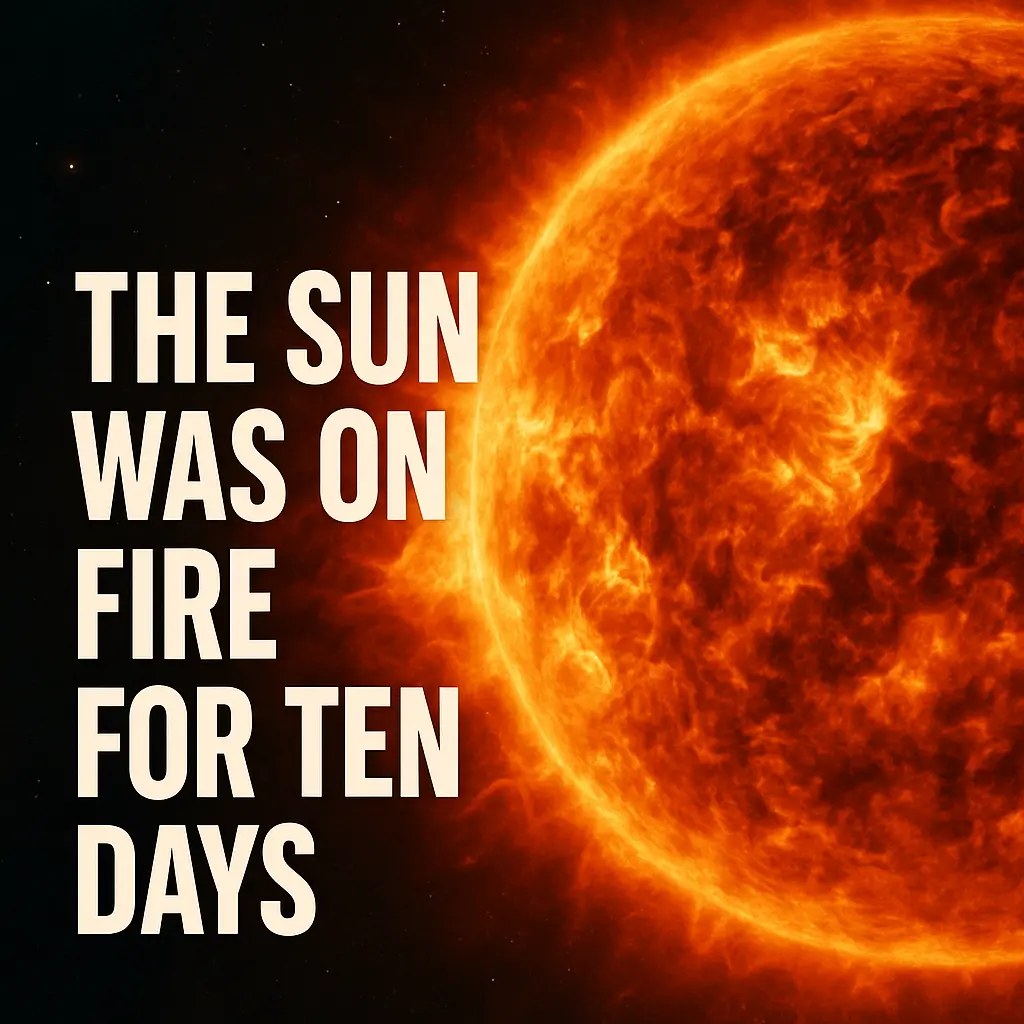Imagine the Sun turning from a distant light in the sky into an unpredictable, explosive force threatening life and technology as we know it. For ten unforgettable days in August 1972, that terrifying scenario came chillingly close to reality.
This was not just any solar storm. It was a sequence of solar events so extreme, so fast-moving, and so powerful that it nearly redefined our relationship with the star we depend on. The August 1972 solar storms weren’t just a cosmic light show—they were a planetary warning shot.
☢️ The Fury Begins
On August 2, 1972, the Sun erupted in a series of solar flares and coronal mass ejections (CMEs), sending billions of tons of charged particles hurtling toward Earth. Just two days later, on August 4, one of the most violent CMEs ever recorded blasted out of the Sun’s corona.
That CME reached Earth in 14.6 hours—one of the fastest arrivals ever observed. Typical CMEs take two to three days to cross the 93 million miles of space between the Sun and Earth. This one roared through space like a cosmic bullet.
🚀 A Close Call for Space Missions
What makes this event even more haunting is how close it came to colliding with human exploration beyond Earth. If a crewed Apollo mission had been en route to or on the Moon during those days, the consequences could have been deadly.
The high-energy particles from the solar proton storm would have penetrated the relatively thin aluminum shielding of the Apollo spacecraft. Radiation doses could have reached 1,000 to 4,000 millisieverts—easily enough to cause acute radiation sickness or death.
NASA dodged a bullet by mere timing. Apollo 16 had returned in April, and Apollo 17 wasn’t scheduled until December. Had this storm struck during an active lunar mission, we might be telling a very different story about the space race.
💣 Earth Isn’t Safe Either
The Sun’s fury didn’t just stay in space. On Earth, strange things began to happen. In Haiphong Harbor, Vietnam, U.S. naval mines—magnetically sensitive—exploded without warning. Dozens of them. The culprit? Geomagnetically induced currents triggered by the storm’s magnetic disruption of Earth’s atmosphere.
Meanwhile, radio communications failed, especially on high-frequency bands. Auroras were seen as far south as Texas and Spain, painting eerie greens and purples across skies unused to such displays.
Even though power grids were not significantly impacted—largely due to the simpler electrical infrastructure of the 1970s—the event offered a grim preview of what might happen in today’s hyperconnected, electronics-dependent world.
🌌 Lessons Burned Into Memory
The 1972 storms became a foundational case study for space weather science. NASA, the U.S. military, and international space agencies realized that radiation from solar storms wasn’t just a theoretical threat—it was a mission-ending hazard waiting to happen.
Modern spacecraft are now designed with radiation shelters, hardened electronics, and real-time solar monitoring systems. Astronauts aboard the ISS and future Moon or Mars missions will rely on this knowledge to survive future space weather events.
And yet, even with all our technology, there’s a sobering reality: we can predict solar storms better than we could in 1972, but we still can’t stop them.
🧭 A Celestial Reminder
The solar storms of August 1972 remind us that the Sun, giver of life, also holds the power to threaten our technological civilization. For ten days, it unleashed a storm so powerful that it disrupted Earth, imperiled missions, and forced scientists to rethink the boundaries of safe exploration.
It wasn’t just the Sun on fire. It was a moment when the cosmos ignited our awareness—and changed how we prepare for the dangers hiding in plain sight, 93 million miles away.
🎙️ Want more stories like this? Tune in to our podcast, where science, history, and space collide in ways you never imagined.


